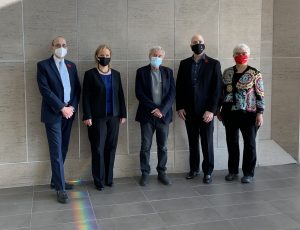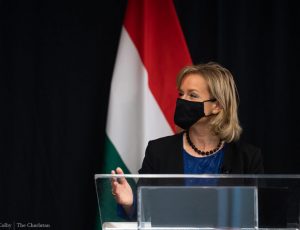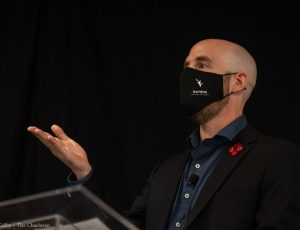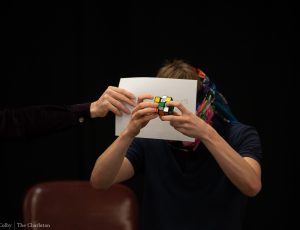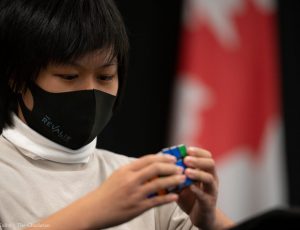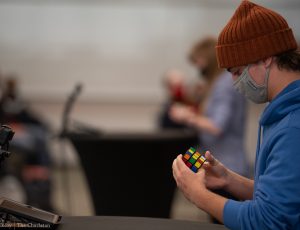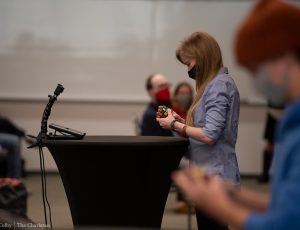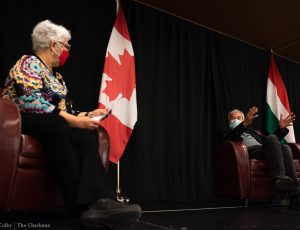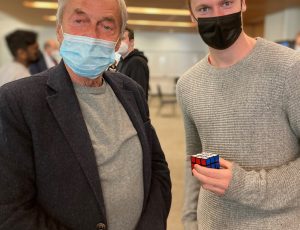by Nathaniel Whelan
“Life is full of inspiration. It depends on you which one you recognize and which one is strong enough to move you on and [start] with something. Usually the directions are not so clear at the beginning… The value is what we are [searching] for, to achieve some different level of something, or you see the richness of the potential of such a thing. It takes time to achieve that, but regularly it is growing, with success partly and failures, and so on. Depends on the task if it’s longer or shorter, but it takes time all the time.”
These wise words should resonate with anyone of any vocation. They act as a reminder of the power of creativity and patience. If you’ve played with a Rubik’s Cube, then you will agree that it takes both just to solve it. It stands to reason then that the person qualified enough to provide such sage advice is the inventor of the cube himself, Hungarian architect and professor Ernő Rubik.
Since its initial release in 1980, the cube’s impact on pop culture has been monumental. Today, it is one of the world’s bestselling toys at over 450 million units.
On November 10, 2021, Carleton International was pleased to host a Rubik’s Cube student competition and moderated Q&A with Professor Rubik. Fifty people had the privilege to attend in-person, while a live stream went out to an audience watching elsewhere, including elementary school classrooms. Jointly organized with the Embassy of Hungary to Canada, this event was both fun and educational. While a number of meaningful topics were discussed, the main takeaway was the cube’s ability to create community and forge relationships.
Earlier this year, Toronto-based toy company Spin Master Corp. completed its purchase of the Rubik’s Cube brand for US$50-million, and has since promised to honour the cube’s legacy through further innovation. Interested in a joint collaboration, this acquisition sparked talks between Carleton University and the Embassy of Hungary back in March 2021.
“My primary goal is to build bridges and strengthen cooperation between Canada and Hungary,” remarked Her Excellency Mária Vass-Salazar, Ambassador of Hungary. “A personal priority for me is to focus on identifying connections in the area of science, technology, and innovation. Therefore, when I learned that an innovative Canadian company Spin Master acquired the Rubik’s brand, I immediately thought that this merger of Hungarian ingenuity and Canadian entrepreneurship provides a great opportunity for building strong partnerships… I’m particularly pleased that we could organize this visit to the prestigious Carleton University to talk about what the Rubik’s Cube means to young Canadians.”
President and Vice-Chancellor of Carleton Dr. Benoit-Antoine Bacon echoed the Ambassador’s words, focusing on how Covid-19 has effected university activities. “The past year has been hard with the pandemic, but I’m proud with how we’ve persevered through these difficulties,” he said. “For me, it highlighted the importance of maintaining community, maintaining our connections… and I’m really pleased that we’re further strengthening our links with the Embassy of Hungary.”
He continued by saying: “This is truly a unique event. I don’t think I’ve had the opportunity to be involved in something quite like this before that really stands out, and I think we’ll all remember this for a very long, long time.”
During this time of isolation, Carleton International was excited to present such a distinctive experience that hopefully provided a bit of a respite for those impacted by the pandemic. Part of what made the event so special was the Rubik’s Cube competition in which student representatives from five different faculties competed in several 1-on-1 elimination rounds. All eight participants gave impressive performances, with one round coming down to less than a second difference!
“Competing in my first-ever cubing contest and doing so in front of the inventor of the puzzle is something I never would have envisioned when I first picked up the Rubik’s Cube as a kid,” said James Hebert, a student from the Sprott School of Business. “I had the opportunity to ask Professor Rubik some questions, talk to the best speedcubers in Canada, and go home with a signed cube! This event is a story I will tell for years to come.”
A professional speedcubing demonstration followed the competition. What most people don’t know is that Ottawa is home to the most former Rubik’s Cube World Record holders out of anywhere in Canada. Antoine Cantin is one such person, having broken five records. Ethnically half-Hungarian, he was very happy to share a few words with everyone, but only after solving the cube blindfolded first. Cantin opened his talk by posing the question: why was the Rubik’s Cube originally known as the Magic Cube?
“The true magic of the cube, for me, comes from its ability to create friendships, create communities, and experiences. Through the Rubik’s Cube, I’ve made some of my best and most special friends. It has also allowed me to become part of the amazing Rubik’s Cube community all around the world,” he explained, gently pacing across the stage. “I’ve been involved in a lot of events, bringing people together through the cube… In those competitions, I could really see the magic of the cube at work, whether it was through new friendships being created, or long-parted friends being reunited again.”
There are currently over 1,000 competitions organized worldwide every year, paving the way for the types of connections that Cantin referred to, many of which cross international borders.
During a moderated Q&A session, Professor Rubik touched on how the cube has managed to have such a global impact.
“I think that is the most magical part of the cube, how human beings in general reacted on this, and how universal it is,” he said. “The cube doesn’t need any kind of instruction, no wording. That means anybody can understand it in any kind of language. Visual coding is very universal coding… and it’s much stronger than words.”
While the Rubik’s Cube is a wonderful toy and a means for friendly competition, Dr. Rafik Goubran, Vice-President (Research and International) at Carleton, reminded everyone that it is so much more than that. It is a tool that has the potential to serve us throughout our entire lives.
“It improves memory. It improves patience. It improves concentration. It also requires perseverance… but most importantly, it improves problem solving skills,” he commented, discussing ways in which the Rubik’s Cube helps stimulate the mind. “[It] allows us to break a problem down into smaller parts and to address each issue one-by-one, while also thinking about how each small part effects the whole thing. And isn’t this as a student, teacher, and researcher what we strive to do every day?”
But Dr. Goubran also made sure to highlight the importance of making connections at an institutional level. He continued by saying: “At Carleton, we want to inspire our students to make discoveries like the Rubik’s Cube. We want to combine creativity and the love of learning with engaged scholarship and research… One of the ways we can do this is by fostering relationships with international universities and building connections between students and faculty members. In doing so, we can collaborate on shared issues, create stronger opportunities for students and researchers, and bring our communities together for the greater good.”
Regardless of the topic of conversation, discussion around the Rubik’s Cube tended to come back around to that same notion of community. Coming out of the morning, it was clear that the cube’s defining quality is its ability to forge many different kinds of relationships. Whether it’s between countries, friends, or universities, Professor Rubik’s invention—a seemingly simply, multi-coloured toy—has the power to shape the lives of those who interact with it.
His journey began over 40 years ago when he developed the first Rubik’s Cube, an elegant cube-shaped puzzle made of wood. When you find inspiration, if you keep with it, there’s no telling the impact your own imagination can have on the world.
Watch the entire recording here.
Photo credits: Spencer Colby (The Charlatan), Nathaniel Whelan, and Ülle Baum
For information on this and other Carleton International events, please contact:
Nathaniel Whelan, Outreach Officer
